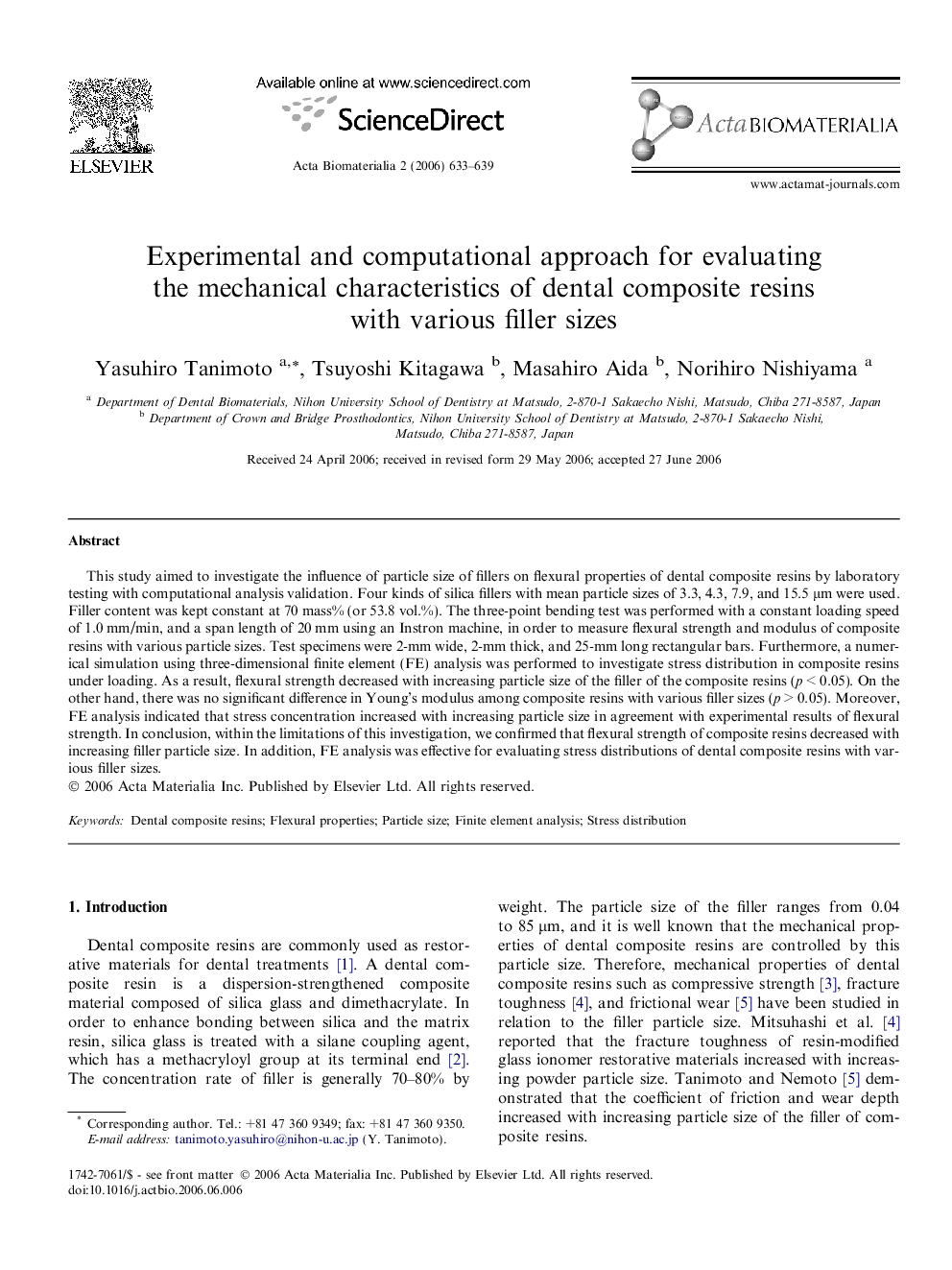| Article ID | Journal | Published Year | Pages | File Type |
|---|---|---|---|---|
| 2629 | Acta Biomaterialia | 2006 | 7 Pages |
This study aimed to investigate the influence of particle size of fillers on flexural properties of dental composite resins by laboratory testing with computational analysis validation. Four kinds of silica fillers with mean particle sizes of 3.3, 4.3, 7.9, and 15.5 μm were used. Filler content was kept constant at 70 mass% (or 53.8 vol.%). The three-point bending test was performed with a constant loading speed of 1.0 mm/min, and a span length of 20 mm using an Instron machine, in order to measure flexural strength and modulus of composite resins with various particle sizes. Test specimens were 2-mm wide, 2-mm thick, and 25-mm long rectangular bars. Furthermore, a numerical simulation using three-dimensional finite element (FE) analysis was performed to investigate stress distribution in composite resins under loading. As a result, flexural strength decreased with increasing particle size of the filler of the composite resins (p < 0.05). On the other hand, there was no significant difference in Young’s modulus among composite resins with various filler sizes (p > 0.05). Moreover, FE analysis indicated that stress concentration increased with increasing particle size in agreement with experimental results of flexural strength. In conclusion, within the limitations of this investigation, we confirmed that flexural strength of composite resins decreased with increasing filler particle size. In addition, FE analysis was effective for evaluating stress distributions of dental composite resins with various filler sizes.
